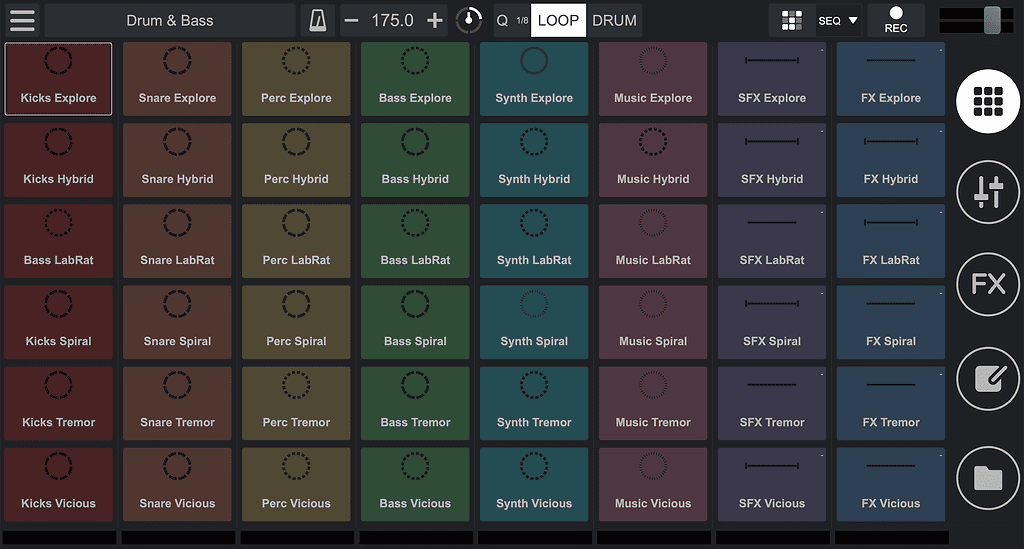Qloop Mac OS
FAQs regarding QLoop and lease auditing in general.
Files News Users Authors. Home Files News Services About Contact Add New. Showing 1 - 19 of 19 Files Date: 2000-02-15. QLoop is graphical software that can aid scientists in batch annotation of chromatin interaction information of targeted genetic loci. This software runs fast and very easy to learn and use. It can search chromatin interactions for genetic sites or regions.
What does QLoop mean?
QLoop is short for “Qualified Loop” – a term coined by Andrew Chukwura, CPA. Through Andrew’s extensive experience directing, managing, and performing thousands of commercial lease audits over 20+ years, he found that there are four key factors critical to analyzing property operating costs for a leased space—lease, property, premises, and environment. These four factors can be qualified in ways that aid in predicting, identifying, and resolving potential billing errors.“Loop” represents Andrew’s discovery that Qualified factors are connected via an infinite feedback loop, which also connects site research, premises selection, lease execution, and administration to site termination and the next site research and selection processes.
What services does QLoop provide?
What is a lease audit?
A lease audit is the systematic and analytical process by which a lease auditor verifies that a landlord and a tenant are in compliance with their respective contractual rights and obligations pursuant to the terms of the contract (commercial lease agreement) for the premises (space) leased to the tenant.
A good auditor should have a keen understanding of the fundamental elements of a lease audit, including the leases and contracts in general, as well as commercial property operations. A lease auditor must have strong accounting, auditing, analytical, and communication skills.
There are two types of lease audits: a “desktop” lease audit and a full “onsite” audit. Desktop refers to an audit performed via correspondence and without visiting the property or location where the records are located.
Qloop Mac Os Downloads
There are two types of onsite audit. The first is the “office” audit, which is when the landlord requests that the audit be performed in their office. Often, this type bars the auditor from removing any documents from the onsite location. Other than the audit location and the auditor’s proximity to the landlord’s accountant and/or property managers and building engineers, the onsite office audit is not too different from the desktop audit.
The second type of onsite audit is the “fieldwork” audit, which involves an inspection of the property, its facilities, or its operations due to an identified concern of the auditor or a need to better understand certain cost trends and values, which cannot be deciphered by only reviewing documents or interviewing the tenant and landlord personnel.
The determination of which type of audit is to be performed depends on the specifics of the lease or the desire of the primary parties (landlord and tenant) of the lease being audited.
While the results of a carefully planned desktop lease audit can accomplish much of what an onsite audit can, a landlord may be apprehensive of distributing contracts and proprietary materials outside their office, thereby limiting the desktop auditor’s access to critical information.
Who are the typical lease audit participants?
The primary lease audit participants are the tenant and the landlord. The secondary participants are the lease auditors, the landlord’s property manager, the lease administrator or accountant, and the tenant’s lease administrators.
For an auditor, understanding this relationship can be key to a successful audit, which not only resolves the financial issues related to the lease, but also maintains or improves the landlord-tenant relationship upon conclusion of the audit.
Who would benefit from QLoop's lease audit tools, resources and training?
Lease auditors, lease administrators, tenants, and anyone else interested in learning more about lease auditing and lease audit concepts. QLoop aims to provide insightful information beneficial to aspiring, novice, and experienced lease auditors.
Increasingly, lease administrators, whose roles have traditionally been limited to the day-to-day administration of leases, are being charged with performing some lease audit functions. QLoop’s lease audit tools, resources, and training are premises-centric and, as such, present most concepts from the tenant’s perspective.
There is GAAS for financial statement audits, what are the standards for lease audits?
None. Unlike financial statement audits which are subject to Generally Accepted Auditing Standards (GAAS), there are no generally accepted lease auditing standards. While some commercial real estate bodies provide standard lease forms, most leases differ in structure and content because there are no standards by which all landlords and tenants must comply. As such, there are also no standards by which lease audits must be performed. In some cases, the landlord and the tenant may specify the parameters, requirements, or procedures by which a lease audit may be performed.

Who should perform a lease audit?
Mac Os Download
Experience is a key factor in lease auditing. Certified public accountants (CPAs) and other accounting, property management, and legal professionals with good accounting and auditing skills, a sound knowledge of leases and contracts in general, and a strong understanding of property operations can be selected as a lease auditor. The use of an inexperienced lease auditor can negatively impact the landlord-tenant relationship and cost them more through opportunity costs and wasted resources.
Why is QLoop's focus on the premises (leased space) and not on the property owned by the landlord?
Mac Os Mojave
A lease exists because of a tenant’s need for the leased space in a property. The terms of the lease focus on how all potential property costs are applicable to the specific tenant’s premises. Most commercial real estate bodies (including those which cater exclusively to tenants) are landlord-centric organizations in that they focus on providing the landlord’s standard property information and metrics for use by the tenant. Given that 10 tenants in a single property could have 10 different lease terms and conditions, QLoop focuses on using the property information to provide premises information and premises metrics based on the specific tenant’s lease.